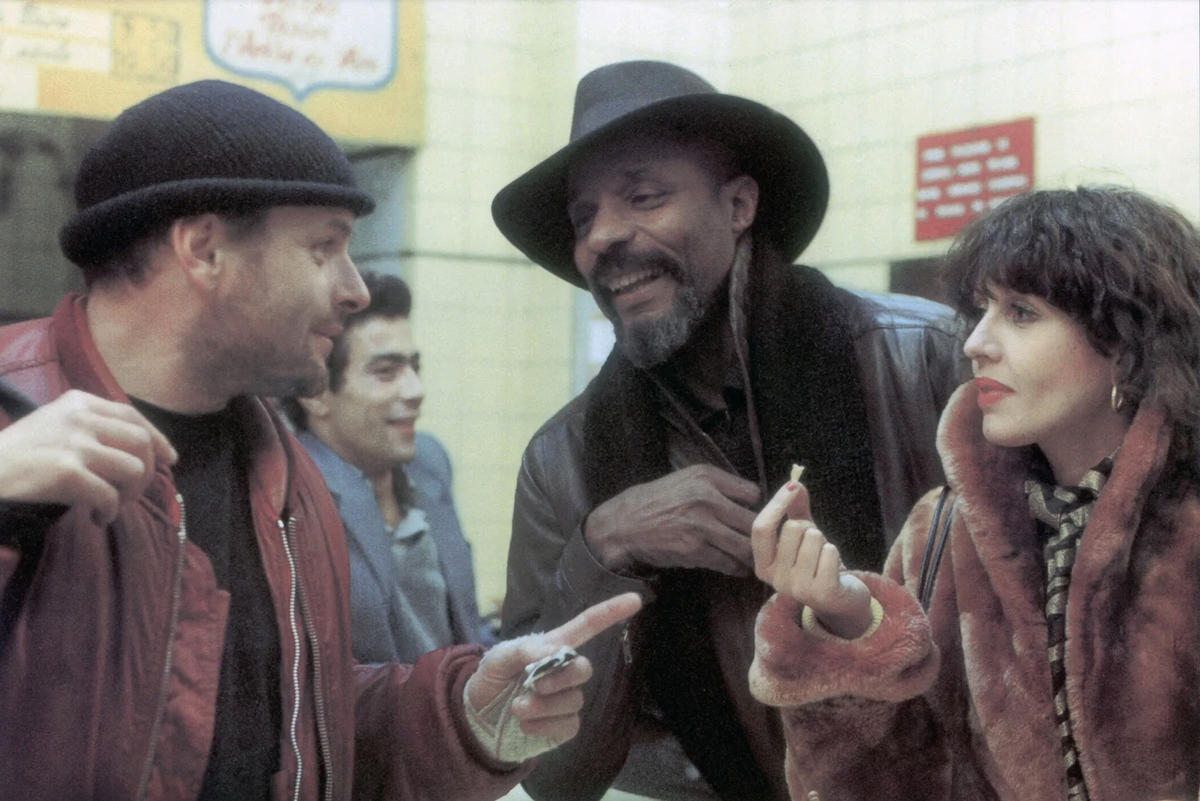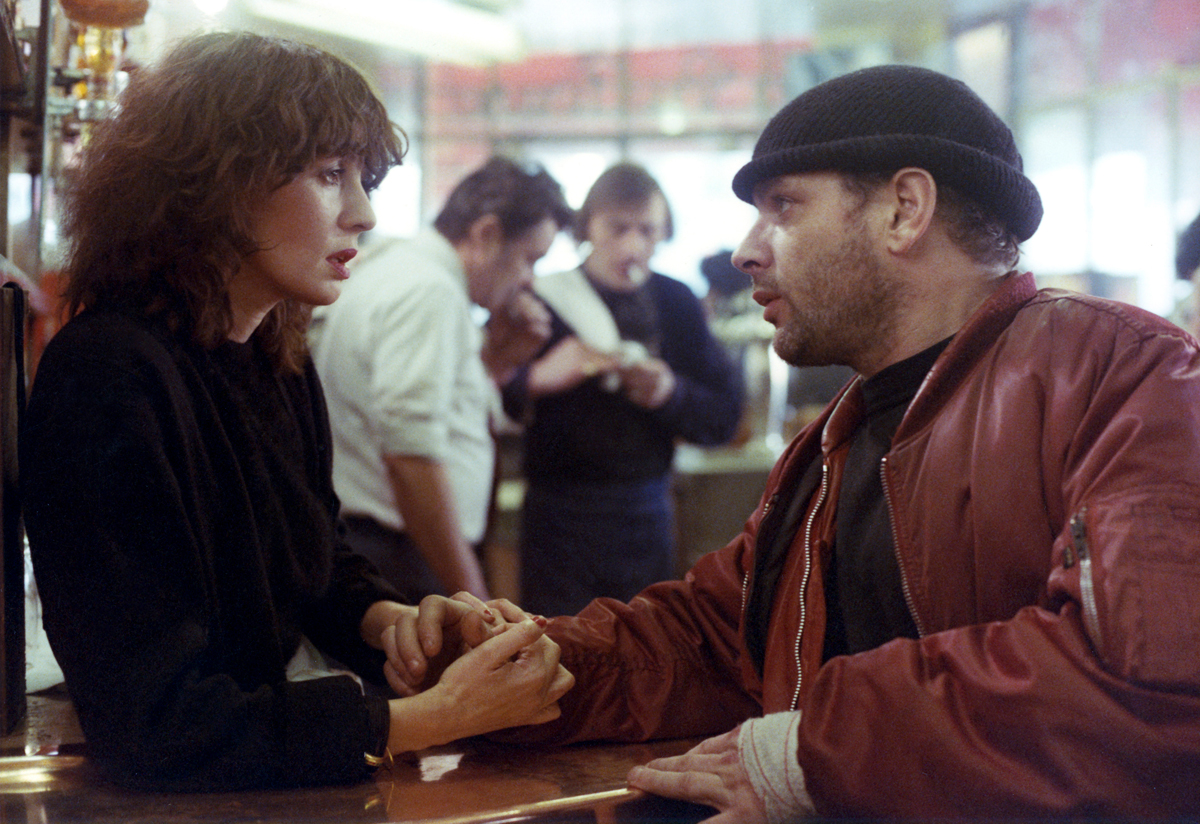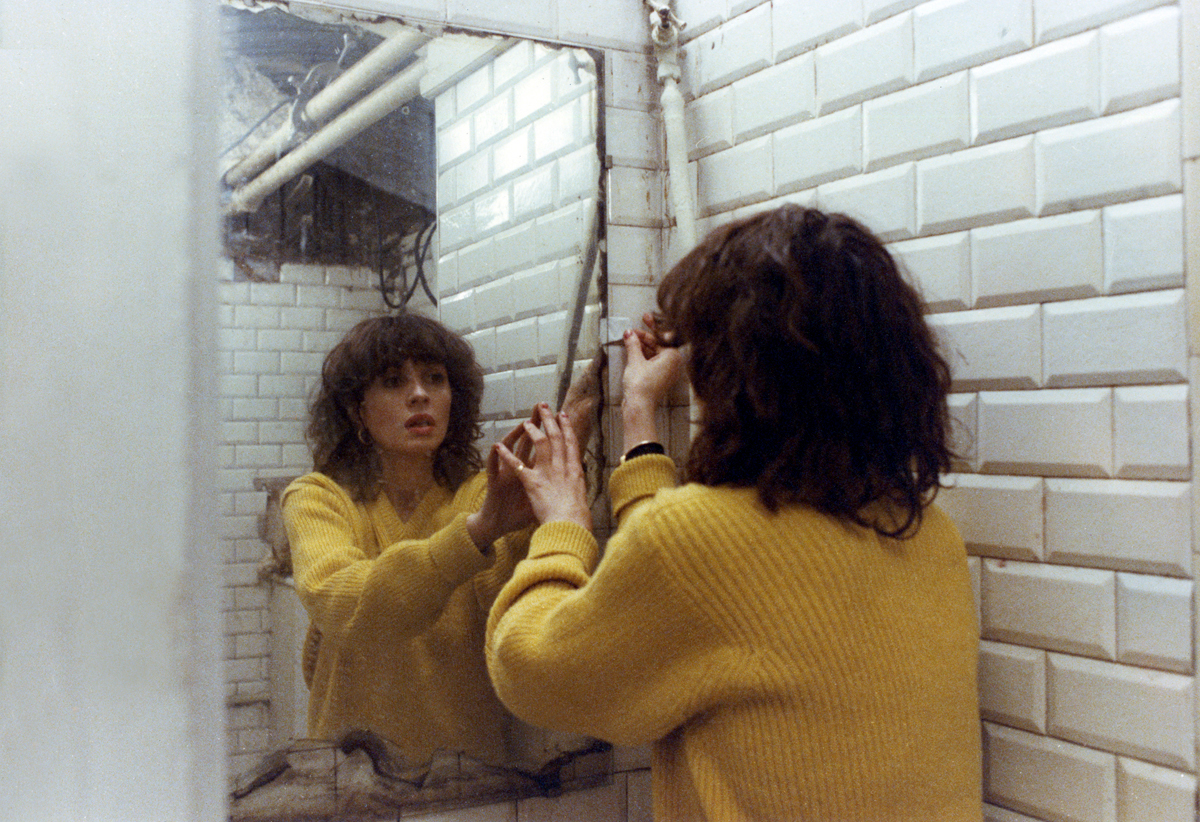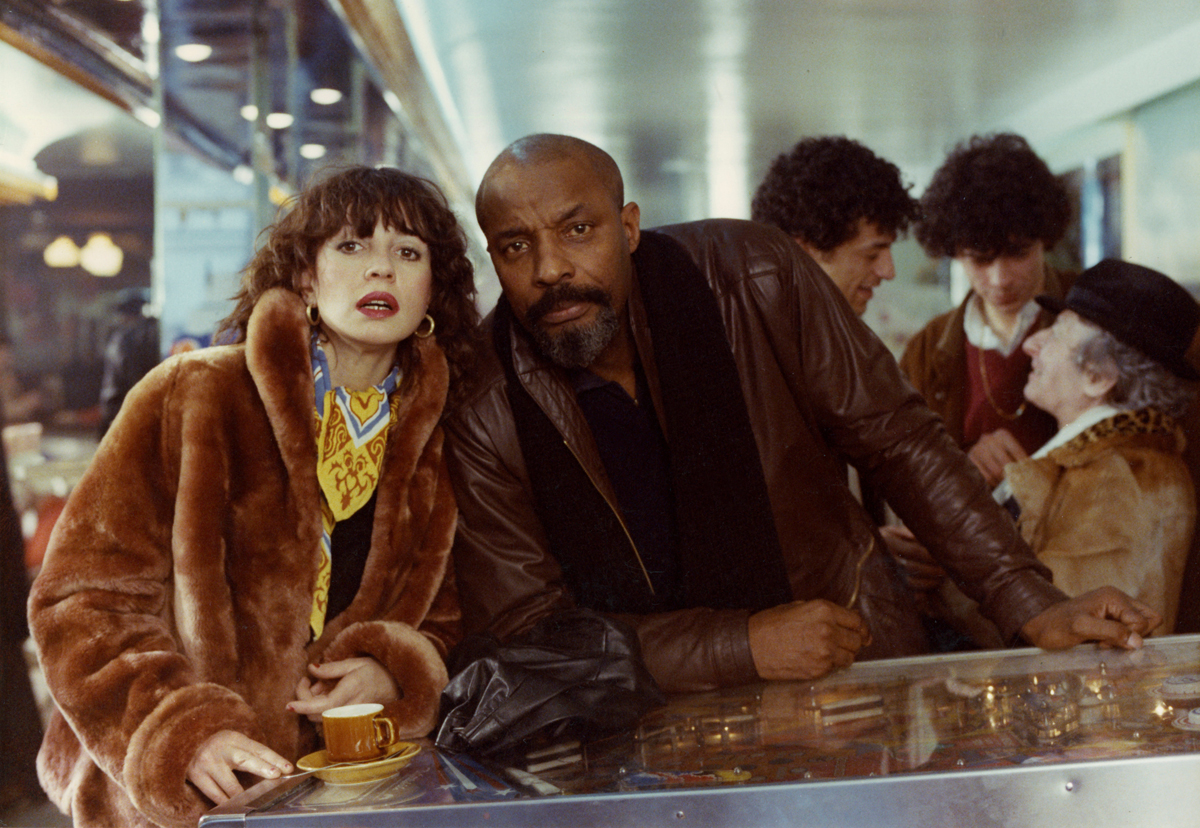 Melissa Anderson
Melissa Anderson
Paris verité: a 1981 neo-noir film about street life in the Pigalle district marks the directorial debut of French New Wave actress Juliet Berto.

Jean-François Stévenin as Willy, Robert Liensol as Joko, and Juliet Berto as Anita in Neige. Courtesy Fun City Editions. © Moune Jamet / Collection Christophel.
Neige, directed by Juliet Berto and Jean-Henri Roger, now playing at Brooklyn Academy of Music, 30 Lafayette Avenue, Brooklyn,
through June 29, 2023
• • •
Good things come in threes. Over the past eight months in New York City, repertory-cinema redoubts have showcased, in newly restored versions, the little-known directing efforts of a trio of women who rank among France’s most eminent actresses. Last November, Light Industry hosted a screening of Vivre ensemble (1973), the first of two films directed by Anna Karina, one of the most paradigmatic performers of the Nouvelle Vague, starring in seven features from the fertile early period of Jean-Luc Godard, her husband from 1961 to ’65. In March, Film Forum hosted “Jeanne Moreau, Cinéaste,” a series devoted to the three films the titaness helmed between 1976 and 1984; it was the second half of a diptych tribute, following “Jeanne Moreau, Actrice” (which included her two films directed by Godard’s New Wave confrère François Truffaut). BAM has followed that dual structure in its salute to Juliet Berto. Earlier this month it highlighted, among others, her performances in films by Godard (whose La Chinoise, from 1967, gave Berto her first credited screen role) and Jacques Rivette, another New Wave godhead. Now it presents a weeklong run of Neige (1981), the first of three films she would direct or codirect.
Taken together, these various celebrations, calling attention to films that have too long remained in the shadows, have provided fuller pictures of post–New Wave French cinema. But Neige—which Berto co-helmed and cowrote with Jean-Henri Roger, her romantic companion—expands something more, namely, cinematic depictions of one of the world’s most photographed cities. Filmed primarily in the Pigalle and Barbès neighborhoods of Paris, this neo-noirish tale provides a glimpse of the capital rarely seen, emphasizing the many marginalized residents of the area: Creole- and Arabic-speaking immigrants, sex workers (many of them trans women), drug sellers and buyers. Superbly photographed by William Lubtchansky (the cinematographer for multiple Rivette films over three decades), Neige, capturing dynamic street life, doubles as urban verité, a funky city symphony.

Juliet Berto as Anita and Jean-François Stévenin as Willy in Neige. Courtesy Fun City Editions. © Moune Jamet / Collection Christophel.
That symphony moves to a reggae-inflected beat, the signature sound of the house band at the club where Berto’s Anita works as a bartender. (It’s worth noting that, in each of their debut directorial projects, Karina, Moreau, and Berto all pulled triple duty: helming, writing, and acting.) Anita is not only a surrogate mother to Bobby (Ras Paul I Nephtali)—the dreadlocked teenager who sells heroin, or “snow,” the French word for which gives the film its title—but also a mama bear of sorts to many of her quartier’s outlaws and outcasts. In her missions she is aided by a nattily dressed West Indian preacher named Joko (Robert Liensol, the lead in Med Hondo’s Soleil Ô, a scathing send-up of French colonialism, from 1970) and, less reliably, by her occasional lover Willy (Jean-François Stévenin), who’d rather be sparring at the gym.
After Bobby—whose adolescent hubris leads him to think he’s invincible, no matter the urgency of Anita’s pleas that he make himself scarce because the narcs are thick on the ground—is killed by the cops, many in the neighborhood are now without a regular supply of dope. Anita and her street-angel adjutants thus turn their efforts to harm reduction avant la lettre, scrounging up the francs to buy a stash from a kingpin so that Betty (Nini Crépon), for one, who works at a cabaret called Sexy Pigalle, won’t die from her withdrawal symptoms.

Juliet Berto as Anita in Neige. Courtesy Fun City Editions. © Moune Jamet / Collection Christophel.
This not exactly airtight plot appears by design to be of secondary, maybe even tertiary, significance to the film. In 1979, Berto wrote that she and Roger, who were living in Barbès at the time, “wanted to show a neighborhood in Paris where ‘multiracial’ life exists each day.” That’s evident in the diverse clientele at any number of the establishments—from run-of-the mill bistros and cafés to outdoor strip shows—where they filmed in Pigalle and Barbès. But Neige also travels farther afield, to the open-air markets of Goutte d’Or, a neighborhood in the eighteenth arrondissement that’s long been home to working-class residents from North Africa and the sub-Saharan region, and to Montreuil, a banlieue where Anita and Joko spend an evening at La Main Bleue, an actual, legendary dance emporium where sapeurs, or African dandies, were once the stars.

Juliet Berto as Anita and Robert Liensol as Joko in Neige. Courtesy Fun City Editions. © Moune Jamet / Collection Christophel.
In Neige, the City of Light is the City of Night. Few scenes take place during diurnal hours; those that do are often set under gray skies. Tellingly, the Eiffel Tower, Paris’s most recognizable landmark, is seen only fleetingly, from a great distance and mostly shrouded in mist. For Berto and Roger, the worthier national treasures are scuzzy movie marquees (one promising “2 Grands Films Pornos”), Pigalle’s wintertime carnival (offering everything from G-rated fun like bumper cars to more X-rated diversions), and neon-lit video arcades. In its emphasis on Paris’s illicit nocturnal thrills, Neige recalls Marie-Claude Treilhou’s contemporaneous Simone Barbès or Virtue (1980), which tracks one long night of its title protagonist, an usher at a Montparnasse porn theater, who, after her shift ends, heads to the outlandish lesbian nightclub where her girlfriend works. But Simone Barbès is apolitical, containing none of the polemical zeal of Neige—a loose ACAB platform firmly on the side of the oppressed.
Although never released in the US in its day, Neige was selected for the 1982 edition of New Directors/New Films, the annual showcase cosponsored by Film at Lincoln Center and MoMA. In his ND/NF writeup in the New York Times that year, Vincent Canby mostly praised Berto and Roger’s feature, though he did call it “youthfully solemn” and added this caveat: “it has the air of a movie made by people whose desire to make a movie was more intense than their need to create an original vision.” That earnest, sometimes clumsy ardor often reveals itself in Berto’s dialogue, prone to portentous declarations such as “Hell is inside me.”
But one of her lines rings with eerie prophesy. “There’s nothing in my heart but the fear of dying old,” Anita tells Joko early on in Neige. Berto herself would die far too young, succumbing to breast cancer in 1990, less than a week before her forty-third birthday. At the time of her death, she was at work on her fourth feature. Were she still alive today, she might have been at work on her fortieth.
Melissa Anderson is the film editor of 4Columns and the author of a monograph on David Lynch’s Inland Empire from Fireflies Press.